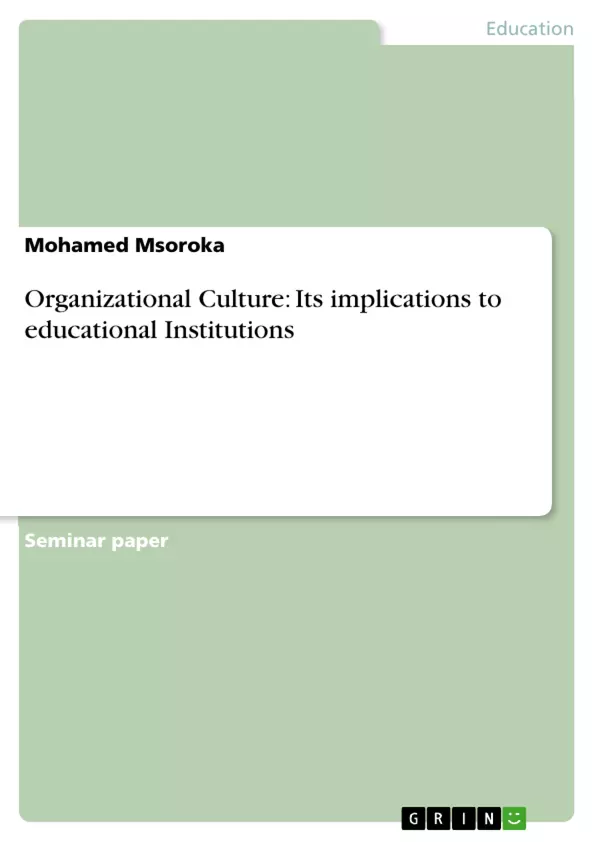Introduction
This paper provides detailed information about organizational culture specifically in education organizations. Because it is impossible to separate culture from value, therefore, in a way, the paper does not ignore to give a highlight on organizational value. The paper elaborates in deep the meaning, characteristics and foundation of organizational culture. In the aspect of value, the paper provides the meaning, types and profile of organizational value. However, the main focus of the paper is to show how organizational culture impacts organizational performance. Therefore, in order to bring out the impacts of organizational culture in the performance of organization, the paper gives the functions of organizational culture. The paper comes to an end by showing the strategies to build high performance culture in schools.
Table of Contents
- Conceptualization of terms
- Culture
- Organizational Culture
- Characteristics of organizational culture
- How cultures are implanted in organizations
- Foundation of Organizational Culture
- Values
Objectives and Key Themes
This text explores the concept of organizational culture, defining it and examining its origins and influences. It also delves into the role of values in shaping an organization's culture.
- Defining organizational culture and its key characteristics.
- Exploring the process of how organizational culture is created and implanted.
- Analyzing the influence of founders, external influences, societal values, and organizational-specific factors on culture.
- Highlighting the importance of values in shaping individual and organizational behavior.
Chapter Summaries
The text begins by defining the term "culture," tracing its roots in the Latin word "cultura" and its relationship to shared beliefs and values. It then delves into the concept of organizational culture, outlining various definitions from scholars such as Robbins & Coulter, Tosi et al., and Jacques. The characteristics of organizational culture are discussed, including its influence on employee behavior, its operation at different levels, and its transmission through socialization.
The text further examines how cultures are implanted in organizations, highlighting various methods such as formal statements of organizational philosophy, physical space design, role modeling, and the use of stories and myths. The influence of founders on organizational culture is also explored, emphasizing the role of their vision, hiring practices, and behavior in shaping the early culture of an organization.
The text concludes by discussing the various factors that influence organizational culture, including broad external influences, societal values, and organization-specific elements. The text also explores the concept of values, defining them as ideas about what is right and wrong, and emphasizing their role in shaping individuals' actions.
Keywords
The main keywords and focus topics of the text include organizational culture, values, socialization, founders' influence, external influences, societal values, organization-specific factors, and the impact of culture on employee behavior.
- Citar trabajo
- Assistant Lecturer Mohamed Msoroka (Autor), 2011, Organizational Culture: Its implications to educational Institutions, Múnich, GRIN Verlag, https://www.grin.com/document/188059



